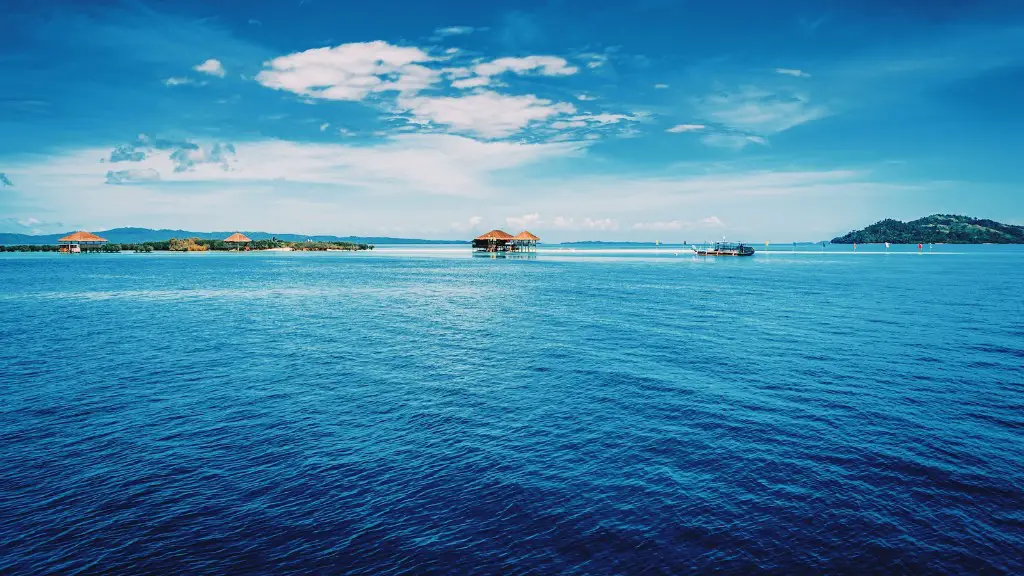China’s Maritime Expansion
China is an immensely powerful country, and over the last few decades it has rapidly emerged as a global leader in many areas. One area where it is making headlines is its maritime expansion in the South China Sea. Since 2013, China has been building artificial islands in the region, driving up tensions and raising concerns among its neighbouring countries and the wider international community.
The South China Sea is an area of great strategic importance. It sits at the nexus of international trade routes, and is estimated to contain 11 billion barrels of oil and 190 trillion cubic feet of natural gas. It is also home to a rich diversity of marine life and fisheries. As a result, it is a flashpoint for several countries who have competing claims over the region.
China’s motivations for its expansion are multi-faceted and complex. Some experts believe that China’s actions are primarily driven by its strategic interests. Many of the islands are located in an area known as the “nine-dash line”, which is the area that China claims to have “historical rights” over. The construction of the islands gives China the ability to project its power further into the South China Sea and to protect its trade routes.
Others, however, suggest that the Chinese government is primarily looking to exert its sovereignty over the region. China has been building a number of large military fortifications and radar installations on the islands, allowing it to project its presence far into the region while significantly boosting its military capabilities. This has raised fears that it could use the region to impose a blockade on its neighbouring countries, or even seize control of its resources.
Finally, it is also possible that China’s expansion is an attempt to secure economic resources and secure economic development opportunities in the region. The artificial islands are increasingly being used as a hub for Chinese commercial activities and could potentially open up access to its vast oil and gas reserves. It is also likely that China is looking to use the islands for tourism and as a base for scientific exploration.
Regional Opposition
The actions of China have been firmly opposed by much of the regional powers. The US, for example, has been particularly vocal in its opposition to China’s actions, and has used its military presence in the region to challenge what it considers to be Chinese aggression. It has launched a number of freedom of navigation operations in which it has sent its navy ships close to disputed islands in order to assert its right to sail through international waters.
China’s neighbouring countries have also condemned its actions. Vietnam, the Philippines, Malaysia and Brunei all have claims over parts of the South China Sea and have expressed concern over the land reclamation activities of China. They fear that they could lose access to the resources in the region which they depend upon for economic development, and that they will be threatened by China’s growing military presence.
The international community has also weighed in on the issue. The United Nations meanwhile, issued a statement in 2016 which called on China to stop its activities, and to respect the territorial claims of its neighbouring countries. The US has issued sanctions and travel bans on Chinese officials for their activities in the region, and has urged the Chinese government to work towards a peaceful resolution.
Effects on the Environment
Continued expansion of the South China Sea islands is having a significant impact on the environment. The dredging and land reclamation activities, for instance, have wiped out entire coral reef ecosystems, which have been damaged beyond repair. Vast areas of the sea have been turned into rubble, severely diminishing the biodiversity in the region, and threatening vital food chains.
The artificial islands have also blocked migratory pathways for species, such as sea turtles and seabirds, reducing their populations while also destroying their habitat. This has created a long-term impact on the marine eco-system, as many species are unable to thrive in the new conditions or are driven away by their predators. It is difficult to estimate the full extent of the damage, as much of it is underwater and remains largely unseen.
The Chinese government has attempted to address some of these issues, by introducing measures such as sea turtle monitoring and conservation of endangered species. However, these are not enough to make up for the massive destruction of habitats and coral reefs, and much of the damage may be irreversible.
China’s Growing Influence
China’s actions have been interpreted as part of a wider move to secure its position as a superpower in the region. Its actions in the South China Sea have not only increased its military presence, but also given it access to a large resource base which it can use for its own benefit.
China is also using its influence in the region to pursue its diplomatic goals. It has become increasingly assertive in the region, and has engaged in a number of diplomatic initiatives that favour its own interests. For example, it recently signed a major economic agreement with the Association of Southeast Asian Nations (ASEAN) which gives it exclusive rights to certain areas of the South China Sea, and has also been involved in negotiations with Japan and India over maritime rights.
The actions of China in the region have increased tensions, and sparked fears among its neighbouring countries and the wider international community. China’s rapid expansion has highlighted the need for a political solution that respects the sovereignty of all countries in the area, and encourages cooperation instead of conflict.
Implications For The International Community
The expansion of China in the South China Sea has implications for the wider international community. China’s actions have raised concerns over the ability of other countries to trade and navigate the waters freely, as the artificial islands could potentially be used to impose naval blockades or restrict movement in the region.
The impact of China’s actions is also felt further afield. The US and other world powers have accused China of undermining international law and flouting the rule of law. This could undermine efforts to develop a global system of governance based on clear principles and norms, and also make it more difficult for smaller nations to assert their territorial rights.
The actions of China also threaten to upend the balance of power in the region. It has sent a strong message that its interests will be pursued with force, and this could potentially disrupt the status quo in the region. It is also likely that other countries in the area, such as Vietnam and the Philippines, will be more likely to develop their own military and defence capabilities in an effort to counter the growing power of China.
Economic Impact
The Chinese government’s actions have also had a detrimental effect on its own economy, as other nations have responded to the expansion by taking action against Chinese businesses and dismissing their investments. This has led to a decrease in foreign investment in the region, causing economic disruption and damaging the long-term economic prospects of neighbouring countries.
In addition, China’s maritime expansion has been expensive. The construction of islands has cost billions of dollars, and China heavily subsidises the shipping and fishing industries in the region. This is putting pressure on it to find alternative sources of revenue, and could hamper its efforts to diversify its economy away from a reliance on exports.
Finally, the environmental damage caused by China’s actions could have long term implications for its economy. The destruction of coral reefs, for instance, has reduced fish populations, which could threaten the stability of local fishing industries and hurt the economies of neighbouring countries.
Legal Challenges
China’s expansion has been heavily challenged in the legal arena, with numerous cases brought against it in international courts and tribunals. In 2016, for instance, the International Tribunal for the Law of the Sea ruled that China had violated the sovereign rights of the Philippines in the region, and ordered that it must cease its activities in the area.
This case, along with other legal challenges, can be seen as an attempt to contain China’s activities in the region and to reassure other nations that their interests will be respected. However, it remains to be seen whether they will be effective in the long-term, as China has a history of disregarding international law.
International Responses
The international community has responded to China’s expansion with a combination of diplomatic and military pressure. The US and its allies have sought to contain China’s activities through the use of freedom of navigation operations, while other countries have sought to negotiate a peaceful resolution to the dispute.
Many nations have called for the Chinese government to enter into talks and to come to an agreement with the other claimants in the region. Australian Prime Minister Scott Morrison, for instance, has stated that “China should join with its neighbors in the region to commit to the peaceful resolution [of the issue].”
The US, meanwhile, has maintained its military presence in the region, both as a way of deterring Chinese aggression and of ensuring freedom of navigation. It has also levied sanctions and travel bans on Chinese officials as a way of pressuring them to comply with international law.
The Way Forward
It is clear that tensions in the South China Sea are unlikely to dissipate any time soon. China’s expansion has created a situation of power imbalance and mistrust, and a peaceful resolution of the dispute remains elusive.
Ultimately, the way forward is to find a way to allow all nations to access the resources in the region while respecting the sovereignty of its neighbours. This could be achieved through a comprehensive agreement that includes all the claimants, or through a binding resolution set by an international body.
In the meantime, it is important that all parties refrain from escalating tensions and work towards a peaceful resolution. This could involve the negotiations of mutual access to the area, with both sides agreeing not to interfere with each other’s activities. It could also involve the establishment of buffer zones in high-risk areas, and the introduction of stricter sanctions for violations of international law.
Whatever the outcome, it is clear that China’s expansion in the South China Sea has caused considerable damage to the region and its people, and that its activities must be reined in. It is now up to all parties involved to work towards a solution that will allow the resumption of peace and stability in the region.


